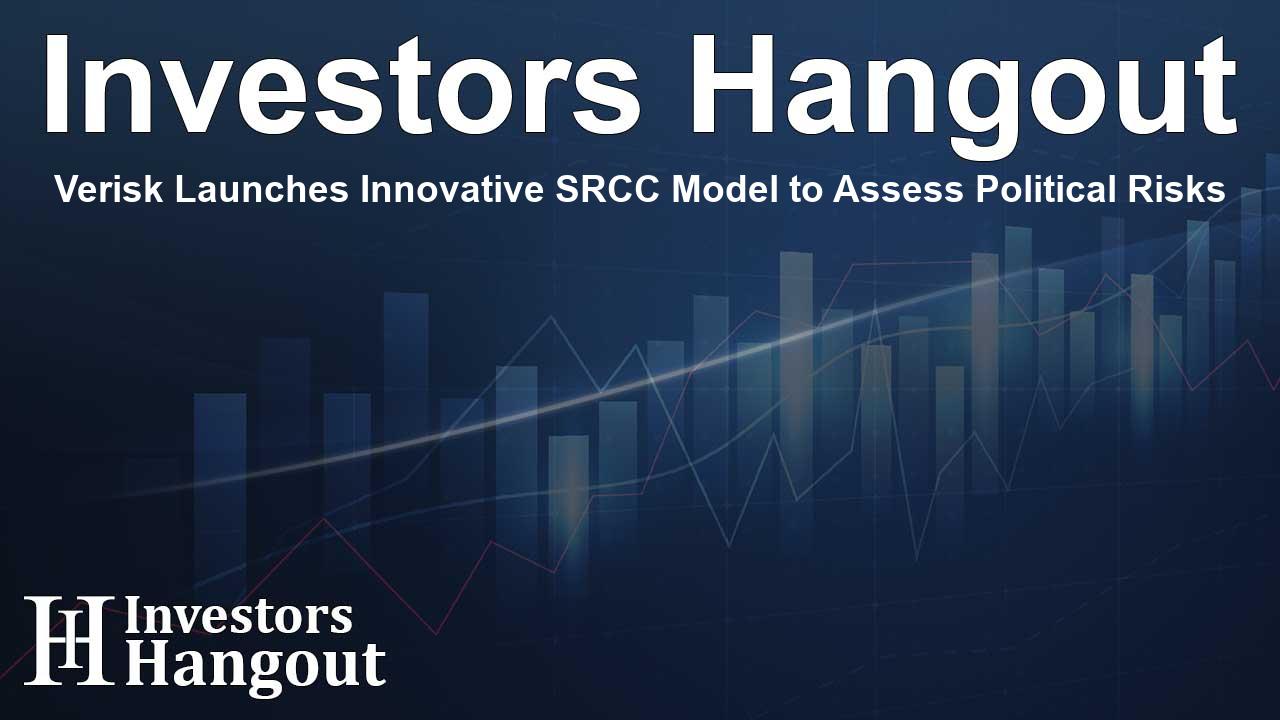Verisk Launches Innovative SRCC Model to Assess Political Risks

Understanding Verisk's Groundbreaking SRCC Catastrophe Model
In today's ever-evolving world, understanding the financial consequences of political unrest has become crucial, especially for the insurance industry. Verisk, a leader in analytics and data solutions, has unveiled a revolutionary catastrophe model designed specifically for the United States. This model aims to provide insurers with robust insights into the financial impacts of civil unrest, including strikes, riots, and civil commotion (SRCC).
The Need for a Comprehensive SRCC Model
The urgency for such a model arises from a distressing trend: since 2010, the world has witnessed over USD 10 billion in insured losses from civil unrest, starkly overshadowing the losses incurred from terrorism. Notably, the insurance sector has grappled with multiple events resulting in over USD 1 billion in losses each in just the past few years. With around USD 3 billion in insured losses noted in the U.S. alone, the introduction of Verisk's SRCC model couldn't come at a more critical time.
Mitigating Financial Risks
According to Sam Haynes, a vice president at Verisk Maplecroft, the emerging need for insurers to grasp political risk intricately highlights the significance of this new SRCC model. He emphasized that a singular SRCC event, occurring once in a millennium, could lead to losses that are tenfold higher than those incurred during the protests seen in 2020. Furthermore, low-probability SRCC events could pose threats to commercial and municipal properties evenly dispersed across metropolitan ZIP codes.
A Deeper Dive into the Model's Features
The Verisk SRCC Model harnesses a vast 500,000-year stochastic catalog, meticulously examining frequency and severity across different kinds of unrest nationally. Utilizing advanced analytical techniques, the model contemplates essential risk drivers such as social and economic trends, historical protest behavior, and political factors. This probabilistic approach promises to deliver deeper insights for exposure management practices, moving past generic data previously used by underwriters and risk managers.
Enhancing Underwriting Strategies
Shane Latchman, who heads Verisk's Extreme Event Solutions team, highlighted that the goal is to empower insurers to refine their underwriting strategies. By integrating insights pertaining to the risks associated with political violence, clients can make informed decisions on pricing, risk management, and capital distribution. This model not only aids in balancing risk with premiums but also creates an environment for effective risk modeling.
Key Advantages for Insurers and Reinsurers
Verisk's SRCC model merges nearly four decades of experience in catastrophe modeling with comprehensive expertise from the global risks division. The model presents a multitude of solutions for insurers and reinsurers that include:
- Accurate estimations of potential insured losses due to SRCC events at both the individual property level and enterprise-wide.
- Development of rigorous underwriting guidelines tailored to accommodate SRCC damages and associated business interruptions.
- Evaluation of tail risks through scenarios that, while plausible, exceed anything that has occurred historically.
- Assisting in compliance and risk management processes by stress-testing extreme disaster scenarios, revealing vulnerabilities before actual events transpire.
Beyond its innovative design, the SRCC model is seamlessly accessible on Verisk's Touchstone platform, transforming the way insurers engage with risk assessment.
Conclusion
Verisk, recognized as a strategic partner in data analytics, continues to lead the charge in equipping the global insurance sector with cutting-edge tools to navigate modern challenges. As the landscape of risk evolves, adopting advanced models like the SRCC will be essential for maintaining resilience against the trials posed by political violence. The integration of this innovative model into the insurance sector is sure to pave the way for more informed and effective decision-making, ensuring that both individuals and communities are better protected.
Frequently Asked Questions
What is Verisk's new SRCC model designed to do?
The SRCC model quantifies the financial impacts of civil unrest events, helping insurers assess and manage associated risks effectively.
How does the SRCC model work?
It employs a 500,000-year stochastic catalog to predict the frequency and severity of unrest across all U.S. ZIP codes, considering various risk factors.
Who benefits from the SRCC model?
Insurers and reinsurers can utilize this model to enhance underwriting strategies, manage risks, and make informed financial decisions.
What unique insights does the SRCC model offer?
It provides a nuanced understanding of potential losses from SRCC events that traditional models may overlook, particularly for low-probability but high-impact events.
Where can insurers access the SRCC model?
The model is available on Verisk's Touchstone platform, a digital solution for catastrophe modeling and risk management.
About The Author
Contact Henry Turner privately here. Or send an email with ATTN: Henry Turner as the subject to contact@investorshangout.com.
About Investors Hangout
Investors Hangout is a leading online stock forum for financial discussion and learning, offering a wide range of free tools and resources. It draws in traders of all levels, who exchange market knowledge, investigate trading tactics, and keep an eye on industry developments in real time. Featuring financial articles, stock message boards, quotes, charts, company profiles, and live news updates. Through cooperative learning and a wealth of informational resources, it helps users from novices creating their first portfolios to experts honing their techniques. Join Investors Hangout today: https://investorshangout.com/
The content of this article is based on factual, publicly available information and does not represent legal, financial, or investment advice. Investors Hangout does not offer financial advice, and the author is not a licensed financial advisor. Consult a qualified advisor before making any financial or investment decisions based on this article. This article should not be considered advice to purchase, sell, or hold any securities or other investments. If any of the material provided here is inaccurate, please contact us for corrections.
